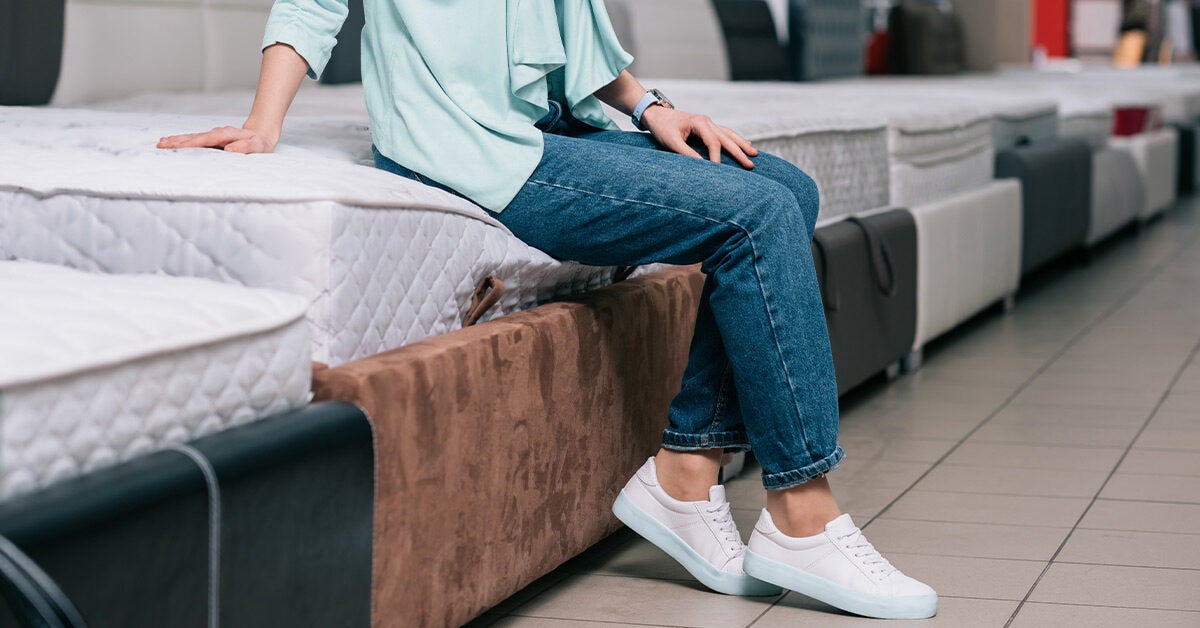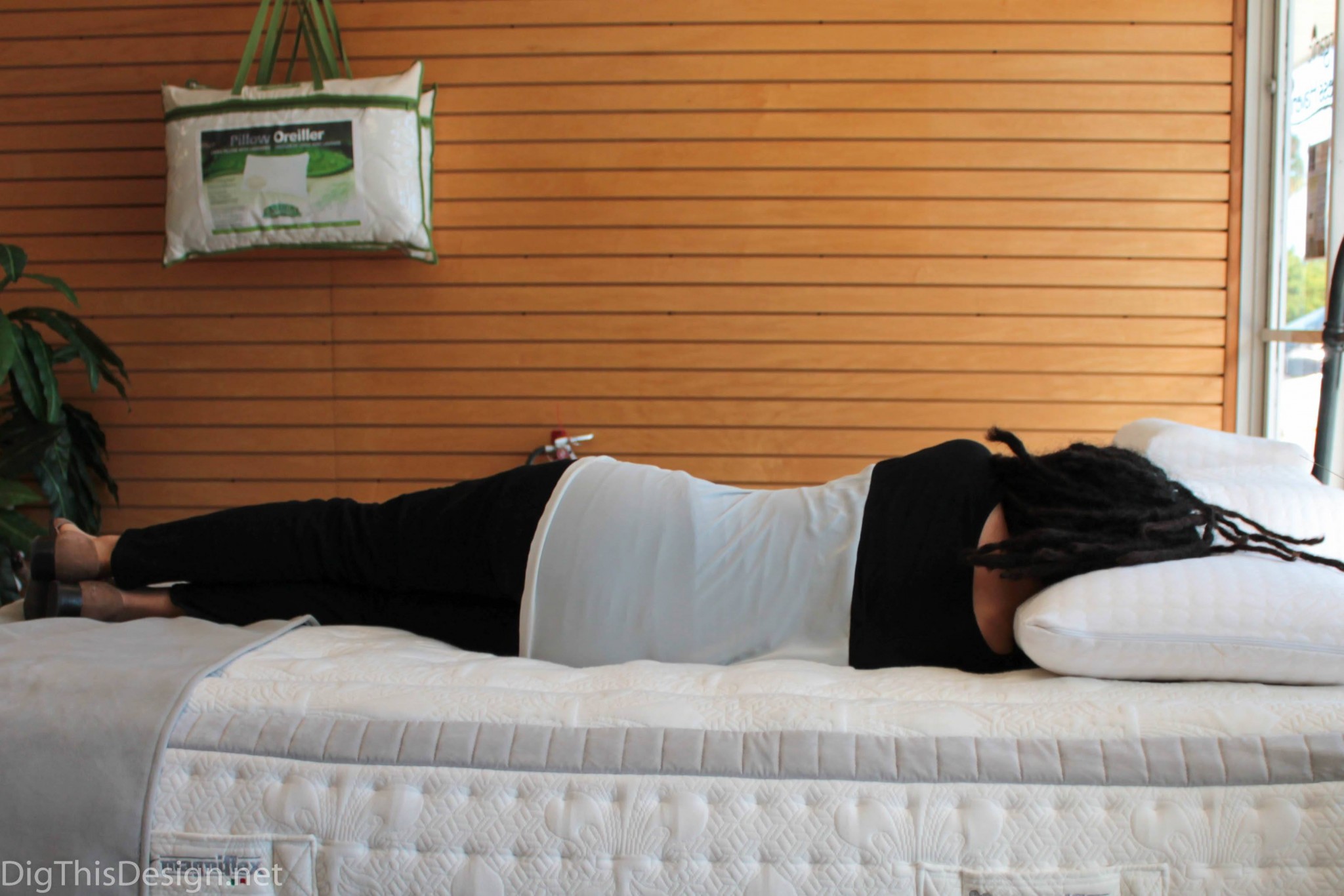Confused about whether a memory foam mattress is the best option for you? You’re not alone. With so many choices, it can be difficult to make an informed decision.
Before you decide, it’s important to understand the pros and cons of memory foam mattresses. Read on to learn more!
Memory foam mattresses are one of the most popular types of beds on the market today, offering superior comfort and support to promote healthy sleep. But with so many varieties and features, it can be difficult to determine which type is right for you. In this article, we’ll discuss the benefits and drawbacks to help you make the best decision for your needs.
Memory foam mattresses are constructed from viscoelastic foam which conforms to the shape of your body, providing pressure relief and superior support. This helps to create an even surface that eliminates pressure points, resulting in fewer disturbances throughout the night. In addition, memory foam mattresses also absorb movement from one side of the mattress to eliminate disruptions from shifting partners.
However, as beneficial as memory foam may be for certain people’s needs, there can also be some drawbacks depending on individual preferences. For example, memory foam may retain more heat than other materials and can make it difficult for people who tend to sleep hot or feel overheated during the night. Additionally, some people may find that adjusting positions or getting out of bed takes more effort with a memory foam mattress than with other types due its higher level of firmness and responsiveness.

Brief overview of memory foam mattresses
Memory foam mattresses are a popular choice among consumers looking for a comfortable, supportive sleeping surface. Memory foam is an advanced material made from polyurethane that responds to body temperature and contours to the body over time, providing support and comfort to all areas of the body. It is also referred to as “visco-elastic” foam because it is both visco-elastic (it responds to heat) and elastic (it returns to its original shape after pressure has been removed).
Memory foam mattresses offer several advantages over traditional spring mattresses. It provides better contouring support at key pressure points, like the shoulders and hips, which is beneficial for individuals who suffer from chronic back pain or other joint pain. It also minimizes movement transferred between partners sharing a mattress, reducing sleep disruption caused by restless sleeping partners. Its temperature responsive quality allows it to stay cooler in summer and warmer in winter than conventional spring mattresses. In addition, many memory foam mattresses are hypoallergenic, which can help reduce allergy related symptoms while sleeping.
Of course there are also some potential drawbacks associated with memory foam mattresses. These include longer wait times when ordering one online, the lack of a trial period outside of light “sleep tests” available in mattress showrooms, high cost compared to traditional spring mattresses (although costs continue to decrease as the technology advances), off gassing odors that requires additional airing out time before using it for prolonged periods of time, heavier weight making them hard or impossible to move or rotate on your own and inadequate support in certain areas due to too much contouring if you sleep mainly on your stomach or back rather than your side.
Pros of Memory Foam Mattresses
Memory foam mattresses offer a range of benefits to consumers, especially those with chronic aches and pains. Here are some of the advantages that memory foam mattresses provide:
- Contours to Your Body: Memory foam is designed to contour to the shape of your body, providing an even level of support throughout. It’s ideal for those with back problems, as it properly supports all parts of the body evenly. This property also reduces tossing and turning in bed at night which can help to improve sleep quality as well.
- Temperature Sensitive: Memory foam is temperature-sensitive and adjusts to the body’s heat by softening in areas which are warm from contact with the body. This helps it adapt perfectly around pressure points, providing maximum support and comfort for a peaceful sleep experience.
- Pressure Relief: Memory foam relieves pressure on the neck, shoulders, spine, hips and other sensitive areas by conforming to your specific body contours. It offers greater support than traditional mattress materials, so you don’t need additional pillows or pads for added relief when you sleep on a memory foam mattress.
- Motion Isolation: Motion isolation is an important feature that helps minimize partner disturbance while sleeping; memory foam molds itself around a body’s shape and weight so that movements from one side of the bed do not disrupt movement on another side where a partner may be sleeping. This makes it ideal for couples who have different preferences when it comes to firmness levels or who move around during their sleep.
Conform to the body’s shape, providing personalized support
Memory foam mattresses are known for their unique properties that accommodate to the individual shape and body areas of the person sleeping on it. As a result, people can benefit from personalized support that contours to their anatomy.
A memory foam mattress distributes body weight evenly around the surface, making it ideal for people with back pain as it relieves pressure from sensitive parts of the body. In addition, because these mattresses respond to heat and weight, they can help to reduce painful pressure points in areas such as hips and shoulders.
Furthermore, memory foam mattresses are highly durable as they are designed to last for many years without showing signs of wear or sag.
Pressure relief, reducing aches and pains
One main benefit of memory foam mattresses is the pressure-relieving qualities it provides. Memory foam is different from a traditional innerspring mattress, as the foam material has been specifically engineered to help evenly distribute weight across the surface, reducing pressure points as a result. This helps reduce aches and pains or numbness caused by an uncomfortable mattress — something especially beneficial if you suffer from chronic pain, need extra support while sleeping, or are recovering from an injury.
Memory foam can also relieve pinched nerves as it gently conforms to uneven areas of your body, such as your hips or lower back. Additionally, some memory foam mattress designs feature edge support for improved comfort and more sleep space when sharing a bed with someone.

Cons of Memory Foam Mattresses
Memory foam mattresses are not without their drawbacks, as they come with a unique set of cons that should be taken into consideration.
The primary con of memory foam is its tendency to sleep hot. Memory foam has naturally greater heat retention, since it is made from polyurethane, which is a petroleum-based material that does not breathe as well as other mattress materials. To maintain an optimal temperature for sleep, many consumers report the need for mattress cooling pads or the purchase of an advanced cooling system such as an active air suspension base or individualized zone cooling technology.
In addition, memory foam mattresses are vulnerable to mold and mildew due to their higher heat retention. Regular cleaning and maintenance can help reduce the risk.
Finally, after some use and abuse, the material can break down over time and lose its original shape or contouring ability. While some mattress companies offer more durable memory foam in higher density levels to address this problem, this increased durability also comes at an increased cost for consumers.
Can retain heat, causing discomfort for hot sleepers
One of the drawbacks of memory foam mattresses is that they can retain heat, leading to discomfort for hot sleepers.
Traditional memory foam mattresses consist of several layers of foam with varying degrees of density and thickness. The core layers are often made from high-density foam, which is known for its ability to conform closely to the body but also for trapping heat and promoting restlessness during sleep.
Adding a layer of cooling gel on top of the mattress can help to manage heat buildup as well as provide additional support and comfort. Additionally, selecting a mattress made with an open cell structure and material designed specifically to absorb heat away from your body can reduce heat buildup while still providing comfort and support throughout the night.
Comparison to Other Mattress Types
When comparing memory foam mattresses to other types of mattresses, there are both pros and cons to consider. Memory foam mattresses are praised for their contouring properties, while innerspring and hybrid mattresses may offer more bounce and have firmer edges. Hybrid (innerspring/memory foam) beds may provide the best combination of support, motion isolation, contouring, and affordability for many sleepers.
Memory foam does not tend to sleep as cool as innerspring beds because the material retains heat more than airy coils do. Latex beds also tend to sleep cool due to their natural breathability. Memory foam’s cooling solutions can also be added with a cooling mattress cover or gel-infused top layer. Additionally, memory foam is generally less expensive than latex — typically coming in at half the price or less — but higher in quality than polyfoam or synthetic foams that can sometimes be found in budget-priced beds.
In sum, the pros to memory foam mattresses include better motion isolation, contouring support, reduced partner disturbances; while cons include potential long-term durability issues (particularly with cheaper foams) and issues with sleeping too hot due to lack of breathability.
Innerspring mattresses: less conforming and pressure relief but cooler and less expensive
Innerspring mattresses are some of the most classic mattresses and offer a variable level of comfort, depending on their layers and design. Generally, they consist of a base layer of steel coils, though some may have pocketed coils or even hybrid designs with pocketed coil/foam combinations.
Pros:
• They offer the classic springy feeling that many people enjoy.
• An innerspring mattress often has ready ‘bounce’ to it if that is desired.
• Innerspring mattresses tend to be significantly more affordable than memory foam mattresses.
• They provide better airflow and temperature regulation than memory foam mattresses due to their construction, which helps keep you cooler at night.
Cons:
• They tend not to mold or conform as well or provide such good pressure relief as a memory foam mattress does for points such as hips and shoulders.
• Hybrid innerspring/foam mattresses can range from medium-level support to extra plush support, but overall these styles often sense softer than memory foam – which can be appropriate for some sleepers who don’t need particularly strong support for their hips and shoulders when sleeping on their side or back.

Latex mattresses: more breathable and durable, but less contouring
Latex mattresses have become increasingly popular in the mattress industry due to their combination of breathability and comfort. Memory foam mattresses offer superior contouring for the body, but latex mattresses are much more breathable and durable over time.
Latex mattresses are constructed of either all-natural or synthetic latex. All-natural latex is harvested from rubber trees and provides a durable, green alternative to memory foam mattresses. Synthetic latex is more cost effective, but less durable than natural products on the market and helps those looking for a budget friendly choice achieve their goals.
Though latex offers significantly more ventilation than traditional memory foam mattresses, this also translates into less contouring to your body’s shape due to the resulting lack of heat retention characteristics that memory foam is known for. While this may be a plus if you tend to sleep hot or dislike intense hug and cradle feeling of other mattress types, it can be deemed a con if you prefer that sensation during sleep.
Latex mattresses also tend to be much pricier than most foam mattress types on the market and many require flipping after several months of use – So if you’re weightlifting one day and sleeping off soreness later that day, flipping your mattress can become quite inconvenient at times!
Factors to Consider when Choosing a Memory Foam Mattress
When choosing a memory foam mattress, there are several factors to consider. Most importantly, what type and size will be the most comfortable for you? Below is a list of considerations to keep in mind when making your choice:
-The density or firmness of the mattress – Memory foam mattresses range in density from soft to super-firm. If you have chronic back pain or a bad back, it may be best to select a super-firm mattress. On the other hand, if you prefer a softer sleeping surface that contours better to your body, then choose one with lower density levels.
-The thickness of the mattress – If you choose a thin mattress, it may not provide enough support for those heavier areas such as hips and shoulders. Conversely, if you choose a thicker memory foam mattress it may be more difficult to move around on. Consider what thickness will be most comfortable for you based on your weight.
-Body temperature regulation – Memory foam mattresses come with different temperature regulating properties such as breathable design fabrics and copper infused memory foam layers that can help reduce heat build up during sleep times. Consider which type will work best for your individual needs if temperature control is important to you when sleeping.
These factors can help guide you in making the right choice when selecting your new memory foam mattress. By considering these points along with any other special needs or preferences that are important for you personally, it should lead to an informed decision on which type of mattress best meets your individual requirements and comfort level.
Firmness level
Memory foam mattresses are produced in a range of firmness levels, from extra soft to extra firm. Depending on your individual needs, it is important to know what options are available to you. Too soft or too firm can both detrimentally affect the quality of sleep.
Extra soft: Extra soft memory foam mattresses offer the greatest comfort because they contour to the body. They are best suited for people who are lightweight and prefer a pressure-relief feel.
Extra firm: Extra firm memory foam mattresses are designed for those seeking an especially supportive surface that provides more springy resistance and less sinkage than softer mattress types. People with heavier body weights and larger body frames may prefer an extra-firm mattress.
Firm: Firm memory foam mattress have less sinkage than softer models and provide a moderate amount of contouring pressure relief while retaining spinal alignment support while sleeping on your back or stomach
Medium: Medium-firm mattresses are the most popular choice among buyers due to their balance between hug and support — they offer optimal conformity, encouraging the spine into proper alignment without sinking too deep; plus, their longevity tends to be better than ultra-soft beds.
Density and thickness of the foam
The density and thickness of the foam used in a memory foam mattress can have a significant impact on how you feel when you lay down on the mattress. Memory foam mattresses range from 2–4 inches thick for their softest models, to 8–12 inches thick for some extra firm models. The thicker the foam layer in the mattress, the more durable and supportive it will be.
The density of the memory foam is also an important factor to consider. Generally, higher-density foam layers provide better support and have a longer lifetime before they gradually lose their shape and firmness over time. Lower-density memory foams are less expensive, however they do tend to have less support, so they can be less comfortable if you don’t get enough support in one form or another. Many mattresses are made with multiple layers of different densities, allowing them to balance between support, comfort and affordability factors.

Conclusion
When it comes to choosing a mattress, we hope you have now weighed the pros and cons of memory foam mattresses before making a final decision.
To sum up, memory foam mattresses provide unmatched comfort thanks to their conforming properties, but they may come at a higher cost than other mattress types. They are ideal for those looking for pressure relief and body contouring support.
Remember that all bodies are different and what might feel good for one person may not be suitable for another. Before making a purchase, be sure to check out customer reviews and test out different mattresses in the store. Additionally, read up on the firmness levels explained in this guide to help better understand how they might affect your sleep experience.
See Also:
- Best Bunk Bed Mattress
- Best Floor Mattress
- Best Air Mattress For Everyday Use
- Best Mattress For Shoulder Pain
- Best Mattress For Scoliosis

